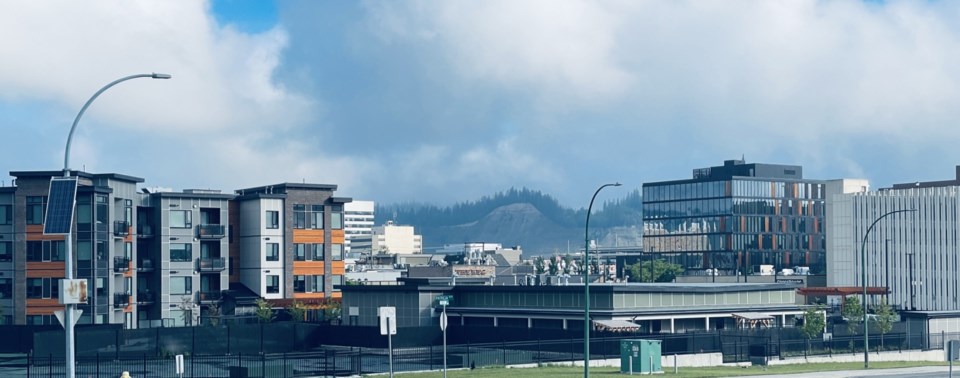Prince George has become a doughnut city, where the downtown withers away while the outskirts keep spreading out.
I remember Kresge’s downtown when I was a kid. I remember Northern Hardware. I remember the downtown being the heart of Prince George, both commercially and culturally. I remember the regular lineups on George Street for the movie theatre at what was once the Holiday Inn, now the Ramada. I remember standing in those lines and seeing friends, socializing, and experiencing the sense of community there was. I remember Sergeant O’Flaherty’s, the countless nightclubs and the packed downtown streets on almost every weekend in the 1990s.
Maybe I’ve just got rose-tinted glasses, but in the 30 years since, downtown Prince George is no longer recognizable.
When we sold off the land on the corner of the highways to John Major for his Treasure Cove casino, not only did we sacrifice the iconic location of Mr. PG so Major could have his barren parking lot, but we also sacrificed the entertainment heart of downtown. Now, it was out on the highways.
Even worse, we shifted the economic and commercial hub to the outskirts — the large big-box stores are now on the west side of town. Anyone on the Hart wanting to do big-box shopping would have to bypass downtown completely.
Between Costco, Superstore, Walmart, Home Depot and Canadian Tire, the millions of dollars that once flowed into downtown businesses every day — many of them locally owned — now flow into the pockets of big chains and billionaires, a disaster for Main Streets everywhere.
Because of this failed vision, we seem to have more traffic than before, more urban footprint, more city responsibilities — and all this with pretty much the same population as we had 30 years ago. In 1996, we had a population of 75,150, and in the 2021 census, we had 76,708.
Our city council may hold dear the line that “growth pays for growth,” but you don’t have to be a rocket scientist to see that if our urban footprint and the number of roads we plow are growing much more rapidly than our population, this “growth” only contributes to our property tax bills.
And now, with the Official Community Plan before us, our leadership is leading us down the same dead-end, overpriced path of the doughnut city.
The Official Community Plan and its Urban Containment Boundary foresee massive urban expansion in the forests between UNBC and Bon Voyage for high-end housing that the rest of us will have to subsidize. In this year’s unfunded capital plan, $10.2 million is already earmarked to double Tyner Boulevard to service this growth. Many more millions will be needed for stormwater. The developers don’t have to pay that. We do.
And yet, apparently, city council can’t change this plan for fear of getting sued.
At the last public hearing on the Official Community Plan, we had to listen to an indigent Lower Mainland developer complain about how he was entitled to millions of dollars of public investment in new city roads through his 98-acre property on Shamrock Road in the Hart, which would add significant value to his property. If we didn’t build him his roads, he threatened legal action against the city.
The last time I checked, we live in a democracy. Our elected officials on city council approve the funding of roads — not the planning department and certainly not the developers.
I would hope, anyway.
A lot of people will point to addiction as the reason for the decline of downtown, and I’d have to agree: we are addicted to the sprawl machine. The subdivisions, the roads, the strip malls, the big-box stores, the water mains, the power lines — all that infrastructure means a lot of work for a lot of people.
But at the end of the day, someone has to pay for it. We pay for it. Our downtown pays for it. Our moose, birds, and bears pay for it. Our sense of community and our culture pays for it.
It doesn’t have to be that way.
We need to prioritize mixed-use development in the bowl and eliminate the multiple zoning barriers to this kind of infilling we have on the books. We need to make sure out-of-town speculators don’t sit on empty lots downtown for decades. We need to make sure the money flows into the existing urban areas, not into bulldozing the forests that define our city.
Speak your mind on April 9 at 7 p.m. for the second part of the Official Community Plan public hearing. Powerful forces are pulling our city apart, but we can still demand a new direction that can try and bring us back together.



